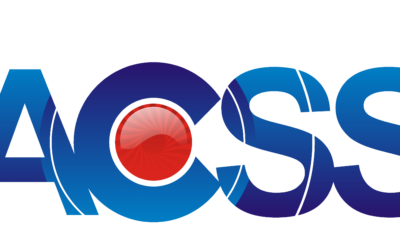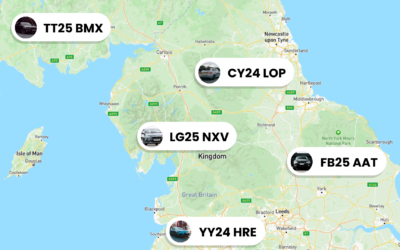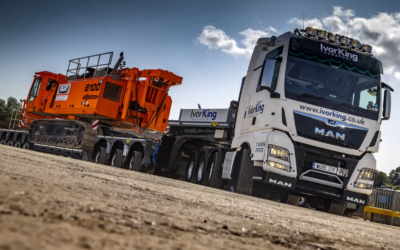Fleet Preventive Maintenance: Checklist & KPIs for Managers
Introduction — What “Fleet Preventive Maintenance” Means for Managers
As a fleet manager, you already know that uptime, safety and cost control are non-negotiable. Fleet preventive maintenance is the structured approach that turns those priorities into repeatable processes. In this guide I’ll walk you through practical checklists, the KPIs that matter, and the workflows you need to stop firefighting and start optimising fleet reliability.
Definition and scope
Fleet preventive maintenance means scheduled inspections and servicing designed to prevent failures before they happen. It covers routine driver checks, scheduled servicing (oil, filters, brakes), and condition-based interventions for engine, chassis and electrical systems across vans, trucks and specialist vehicles.
Who this guide is for and what you’ll get
This article speaks directly to fleet managers, maintenance supervisors and operations leads. Expect ready-to-use checklists, KPI definitions, implementation steps and technology options (CMMS, telematics and digital inspections) you can apply this quarter to improve availability and reduce whole-life costs.
Why Preventive Maintenance Matters
Preventive maintenance is not just a nice-to-have: it’s a strategic lever for cost reduction and service reliability. By moving from reactive fixes to repeatable fleet preventive maintenance routines you reduce unexpected downtime, protect revenue streams and improve driver safety. Reliable vehicles mean on-time jobs, lower roadside call-outs and fewer warranty disputes.
Cost and uptime impacts
Planned maintenance lowers major repair bills and spreads costs predictably. A well-run fleet preventive maintenance programme typically reduces unplanned downtime and repair costs by catching faults early — improving fleet utilisation and lowering cost per mile.
Safety, compliance, and risk reduction
Regular checks keep vehicles within regulatory standards and reduce incident risk. Documented inspections support compliance audits and protect your organisation from fines or liability after an accident.
Fleet performance and customer service
Availability drives reputation. When vehicles are ready and dependable, customer satisfaction improves and operations run smoother — from scheduled deliveries to ad-hoc jobs.
Core KPIs for Fleet Preventive Maintenance
KPIs are the language management uses to measure success. For a robust fleet preventive maintenance strategy, prioritise availability, efficiency and cost metrics that are actionable and aligned to business targets. Measure consistently and report monthly to spot trends early.
Availability and uptime metrics
Key metrics include fleet availability (%) and uptime (%). Targets vary by sector — aim for >95% for high-utilisation fleets and >90% for mixed-use. Track the percentage of vehicles operational at peak times.
Maintenance efficiency metrics
Track MTTR (mean time to repair) and MTBF (mean time between failures). Lower MTTR and higher MTBF indicate efficient repairs and reliable assets, respectively — both essential when scaling your fleet preventive maintenance programme.
Cost metrics
Measure maintenance cost per vehicle, cost per mile/hour and parts cost ratio. These illuminate where spend is rising and where you can negotiate better supplier rates or change stocking policies.
Compliance and quality metrics
Inspection pass rate, overdue work orders and safety-related defects per month help you track regulatory performance and repair quality.
How to set KPI targets
Use historical data to set baseline targets, then tier goals into ‘acceptable’, ‘stretch’ and ‘optimised’. Regularly review KPIs with operations and finance to ensure they reflect business realities and don’t incentivise the wrong behaviours.
Preventive Maintenance Checklist (Templates & Schedules)
Checklists turn intent into action. Below are templates you can adapt for daily, weekly, monthly and annual cadences — all central to a consistent fleet preventive maintenance approach. Use these as starting points and refine by duty cycle.
Daily and pre-trip checks
Drivers should complete a short pre-trip check each shift: lights, indicators, windscreen, wipers, oil level, coolant, brake response and tyre condition/pressure. Digital signatures and photos are low-effort ways to raise accountability.
Weekly and monthly tasks
Weekly checks include fluid top-ups, battery terminals and tyre pressure audits. Monthly items add filter inspections, brake pad wear checks and electrical system health. Log outcomes in your CMMS or mobile app to create an auditable trail.
Quarterly and annual service items
Quarterly services should cover deeper checks — transmission, suspension, brake systems and emission controls. Annual servicing usually includes full diagnostics, calibration and major consumable replacement as per OEM guidance.
Vehicle-type-specific items
Different vehicles need different care. Light vans require more tyre and load-securing checks, heavy trucks need air system and PTO inspections, and specialist vehicles (e.g. refrigerated units) need temperature-control system maintenance. If you manage car rentals or taxi fleets, customise checklists to turnover and usage.
How to customise checklists for duty cycles
Base schedule frequency on mileage, engine hours or telematics-derived condition signals. For high-mileage vehicles, shorten intervals; for light-use vehicles, extend them responsibly. The goal is efficient prevention, not unnecessary work.
Building a Repeatable Preventive Maintenance Program
To sustain improvements, standardise roles and processes so fleet preventive maintenance becomes the norm. Clear responsibilities, documented SOPs and a strict work-order lifecycle prevent tasks from slipping and ensure consistent outcomes.
Roles and responsibilities
Define who schedules work, who signs off repairs, and who owns parts procurement. Typical roles: fleet manager (strategy & KPIs), maintenance supervisor (execution), technicians (repair quality) and drivers (daily checks).
Standard operating procedures (SOPs)
Document SOPs for inspections, triage, repair prioritisation and escalation. Include expected response times for defect severities and the criteria for taking a vehicle off the road.
Work order lifecycle
Design a work order flow: report → triage → assign → repair → QA → close. Use minimal required fields to keep the process fast but capture critical data (fault type, hours/mileage, parts used, technician ID).
Communication and escalation paths
Set clear channels for drivers to report faults (SMS, app or helpdesk). Escalate safety-related defects immediately and route non-critical items into scheduled maintenance to avoid ad-hoc downtime.
Tools & Technology: CMMS, Telematics, and Inspections
Technology amplifies your team’s impact. A modern CMMS combined with telematics and mobile inspections automates scheduling, captures condition data and reduces paperwork — all critical for an effective fleet preventive maintenance programme.
Choosing a CMMS or maintenance platform
Look for scheduling automation, parts tracking, reporting, mobile access and integrations (ERP, fuel cards). The right CMMS makes it simple to schedule routine PM, track labour and measure KPI trends without manual spreadsheets.
Telematics integration
Telematics data (fault codes, engine hours, idle time, harsh events) lets you shift from time-based PM to condition-based maintenance. Learn more in our Fleet Telematics: Cost-Cutting Playbook for Managers post for ideas on triggering work orders from vehicle data.
Digital inspections and mobile workflows
Use mobile checklists with photo capture to improve inspection quality and accountability. Digital workflows cut admin time and feed CMMS records automatically — essential for scaling a reliable fleet preventive maintenance practice.
Data-driven scheduling vs. time-based scheduling
Start with time-based schedules to build discipline, then progressively adopt data-driven triggers where telematics justify condition-based replacements. This hybrid approach reduces unnecessary interventions while catching real issues early.
Parts, Inventory, and Vendor Management
Parts availability determines how fast you can complete PM tasks. Smart inventory policies and vendor relationships reduce downtime and control costs — crucial levers in any fleet preventive maintenance programme.
Inventory best practices
Define reorder points, lead times and safety stock for high-turn SKUs. Use ABC analysis to focus stock capital on parts that matter most to uptime and rotate slow-moving items to prevent obsolescence.
Vendor selection and management
Choose vendors using clear KPIs (lead time, fill rate, quality). Consider long-term contracts for consumables to secure pricing and service levels. For warranty claims, maintain detailed repair logs to pursue recoveries where possible.
Cost control on parts and consumables
Negotiate bulk buys for high-use items, rationalise SKUs across the fleet and track parts usage by vehicle and job type to spot abuse or misallocation. Visibility here directly reduces your maintenance cost per mile.
Technician Workflow, Training, and Productivity
Your technicians are central to delivering quality PM. Investing in their training, tools and structured workflows lifts productivity and reduces rework — a major contributor to lowering whole-life costs.
Skill matrix and certifications
Create a skills matrix mapping technicians to tasks (engine diagnostics, electrics, hydraulics). Track certifications and plan training to fill gaps, especially as fleets adopt new tech or electrified vehicles.
Productivity tracking and scheduling
Balance planned PM with reactive repairs by reserving dedicated capacity for scheduled work. Use simple productivity metrics — jobs completed per day and average labour hours per job — to identify bottlenecks.
Quality control and inspections after repair
Implement a post-repair checklist and sign-off process. This prevents repeat visits and provides the evidence you need for warranty claims or supplier disputes.
Continuous training and knowledge sharing
Run weekly tech huddles to share common faults and fixes. A short, structured knowledge base reduces diagnostic time and ensures lessons are retained across the team.
Measuring ROI and Continuous Improvement
Proving value keeps leadership support for fleet preventive maintenance. Calculate savings from reduced downtime and repair costs, and use KPIs to prioritise improvements each quarter.
Calculating savings from reduced downtime and repairs
Estimate ROI by comparing baseline unplanned downtime costs (lost revenue, call-outs, rental replacements) with the expected reduction after PM improvements. Include labour savings from fewer emergency repairs and extended asset life.
Using KPIs for iterative improvement
Run monthly KPI reviews to adjust schedules, shift parts stock levels or change vendor arrangements. Small changes in MTBF or MTTR compound quickly across a fleet.
Feedback loops from drivers and operations
Drivers and dispatchers notice early signs of wear. Create simple feedback channels and act on recurring reports — their insights often highlight systemic issues faster than dashboards.
If you’d like to see how these KPIs and workflows work in practice, book a demo with Traknova and we’ll walk you through a customised setup that maps directly to your fleet’s needs.
Common Pitfalls and Practical Best Practices
Even the best-intentioned programmes can fail without disciplined execution. Here are common pitfalls and practical fixes to keep your fleet preventive maintenance programme effective as the fleet grows.
Over- or under-maintaining — finding the balance
Too-frequent servicing wastes labour and parts; too-sparse servicing invites breakdowns. Use telematics-backed condition signals where possible and review failure data quarterly to tune intervals.
Poor data quality and inconsistent inspections
Incomplete or inconsistent records undermine decisions. Standardise digital inspections, require photo evidence for defects and audit records monthly to keep data reliable.
Scaling the PM program as the fleet grows
Standardise processes, invest in a scalable CMMS and promote cross-training. Plan capacity increases (techs, bays and stock) ahead of growth to avoid service backlogs.
Quick wins to implement this quarter
Start with three high-impact actions: enforce daily driver checks with photos, automate scheduling for top 20% of vehicles, and standardise one SOP for urgent safety defects. These deliver visible gains quickly.
Conclusion and Implementation Checklist
To recap, a disciplined fleet preventive maintenance programme combines clear KPIs, repeatable checklists, the right tools and engaged technicians. Start small, measure, and scale. The payoff is predictable costs, safer vehicles and higher availability.
90-day rollout checklist
- Week 1–2: Define KPIs and baseline data collection.
- Week 3–4: Implement daily driver checks with digital capture.
- Month 2: Configure CMMS schedules for high-use vehicles and stock critical parts.
- Month 3: Train technicians on SOPs and begin monthly KPI reviews.
Final tips and next steps
Start with high-utilisation vehicles, use telematics to refine intervals, and make continuous improvement a governance item in monthly ops reviews. If you want hands-on support, schedule a consultation to map the plan to your fleet.
Resources and templates available
If you’d like downloadable checklists or a sample KPI dashboard, book a demo and our team will provide templates tailored to your fleet size and duty cycles. For related reading on electrification and charging, see our Fleet Electrification Guide for Fleet Directors and on data security, our guide on Understanding GDPR and Data Security in Telematics.
Frequently Asked Questions (FAQs)
How often should I perform preventive maintenance?
There’s no one-size-fits-all answer. Start with OEM schedules, adjust for duty cycle (mileage/hours) and use telematics to move towards condition-based triggers. Review every quarter to refine intervals.
Which KPIs are most important for small fleets?
For small fleets, focus on fleet availability, maintenance cost per mile and overdue work orders. These are simple to measure and directly affect operating performance.
Can telematics replace a CMMS?
Telematics provides valuable condition data, but it doesn’t manage work orders and parts — a CMMS remains essential for scheduling, history and reporting. Integrating both gives the best results.
How do I measure ROI from preventive maintenance?
Compare pre-programme downtime and repair costs with post-programme figures, including reduced call-outs, rental avoidance and extended vehicle life. Simple payback calculations often show benefits within 6–18 months.
How do I get started quickly?
Start with driver pre-trip checks, capture them digitally, configure CMMS for top 20% highest-use vehicles and run one KPI review after 30 days. These quick actions create momentum.
Ready to transform your preventive maintenance? Book a tailored demo or consultation with Traknova to see how our platform helps automate schedules, integrate telematics and improve uptime: Book demo.
We’d love your feedback. If this guide helped, please share it with your network and let us know what else you want covered — what’s your biggest maintenance challenge right now? Reply or contact us and we’ll follow up. If you found the tips useful, consider sharing on social channels to help other fleet managers optimise their programmes.










